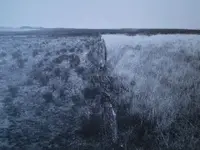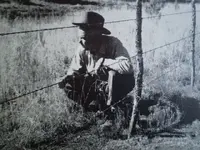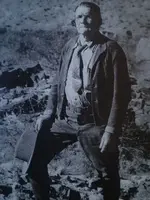enigma
Jr. Member
- #1
Thread Owner
a glimpse of the tonto forest/tonto basin late 1800's to early 1900's
in an earlier thread there was mention of a talk given by matt cavaness to the arizona cattlemans association in the early 1920s describing the cattle range in the superstitions when matt was first building up his ranch. i didnt have any luck finding that specific presentation but did come across one that might be of interest.
the attached link is to a paper written by a mr fred croxen who was a forest ranger on the tonto national forest in the early 1900s. he wrote a paper titled history of grazing on tonto that he then presented to the tonto grazing conference in phoenix november 4-5 1926. his talk starts between 1/3 and 1/2 the way down the page on the link provided.
http://www.foresthistory.org/ASPNET/Publications/region/3/early_days/1/sec8.htm
here are a few exerpts that give a good physical description of what the tonto basin and surrounding areas looked like in that time period if you dont want to read through the full description
although this isn't specifically a description of the superstitions or the area around the matt cavaness ranch, its likely that both areas reacted the same way to the conditions of the time.
for further reading if interested, there is a nice interview with fred croxen at the start of this link
http://www.foresthistory.org/ASPNET/Publications/region/3/early_days/1/sec9.htm
in an earlier thread there was mention of a talk given by matt cavaness to the arizona cattlemans association in the early 1920s describing the cattle range in the superstitions when matt was first building up his ranch. i didnt have any luck finding that specific presentation but did come across one that might be of interest.
the attached link is to a paper written by a mr fred croxen who was a forest ranger on the tonto national forest in the early 1900s. he wrote a paper titled history of grazing on tonto that he then presented to the tonto grazing conference in phoenix november 4-5 1926. his talk starts between 1/3 and 1/2 the way down the page on the link provided.
http://www.foresthistory.org/ASPNET/Publications/region/3/early_days/1/sec8.htm
here are a few exerpts that give a good physical description of what the tonto basin and surrounding areas looked like in that time period if you dont want to read through the full description
...He tells of Blackfoot and Crowfoot Gramma grass that touched one's stirrups when riding through it, where no Gramma grass grows at present...
...Most of the old trees are gone, some have been cut for fuel, many others cut down for the cattle during drouths and the winters when the feed was scarce on the range, and many have washed away during the floods that have rushed down this stream nearly every year since the range started to deplete. The same condition applies to practically every stream of any size on the Tonto. The first real flood to come down Tonto Creek was in 1891 after it had rained steadily for 12 days and nights. At this time the country was fully stocked, the ground had been trampled hard, much of the grass was short, or gone, gullies had started and the water came rushing down. This flood took a good deal of the agricultural land from the ranches along the creek and was so high that it filled the gorge where it entered Salt River at the present site of the Roosevelt Dam and backed a house up Salt River about a mile...
...Curley Mesquite grass covered the foothills but did not extend to so low an elevation as at present, these lower elevations having been covered by grams and other grasses now gone...
...He says the Pine Bunch grass in the pine timber under the Rim was three feet high and stood in great bunches. The cattle and horses that grazed on it ate only the heads. Sheepmen first set fire to the Pine Bunch grass under the Rim when passing through, so they would have young tender feed for their sheep the next trip...
...the roots of the Pine grass are very close to the top of the ground, so it was soon killed out in this way. There is little of this grass to be found under the Rim at present. Revilo Fuller, a resident of the Pine settlement, first came to Tonto Basin in 1877. He says, "on Hardscrabble Mesa there was a red-topped grass that had a good head and grew to a height of about 16 inches. This was not a bunch grass but grew on stems, similar to Blue Stem." There is none of this grass to be found now. All the men interviewed state that there was little brush in the country at the time stock was first brought in, and it was possible to drive a wagon nearly anywhere one desired...
...The range was not only grazed out, but was trampled out as well. Moisture did not go down to the remaining grass roots and the cow trails were fast becoming gullies which drained the country like a tin roof. Sheet erosion started in many places, especially on the steep slopes and the thin soil was soon washed away and only rocks were left.
Cliff Griffin says that from 1894 to 1904, after the great herds of cattle had grazed over the Salt River country, there was no rooted grass, only browse and annuals remaining. And this was only 30 years after the first cattle had been placed on the range. Then from 1904 to 1910, the seasons were good, cattle not so plentiful, and the grasses started to come back and he says there is more grass on the slopes of Salt River now than there was from 1894 to 1904.
About 1890, a man named Ramer contracted 10,000 steers to be delivered in Holbrook at $15, $18, and $21. For the next 10 or 12 years the cattle business boomed. The drought of 1904, the worst since the coming of white men to these parts, at which time it failed to rain for 18 months, hit the range country; and cattle on the overstocked and depleted ranges died in bunches. Since that time there has never been nearly as many cattle as there was prior to that time — and there never will be...
although this isn't specifically a description of the superstitions or the area around the matt cavaness ranch, its likely that both areas reacted the same way to the conditions of the time.
for further reading if interested, there is a nice interview with fred croxen at the start of this link
http://www.foresthistory.org/ASPNET/Publications/region/3/early_days/1/sec9.htm
Last edited:








